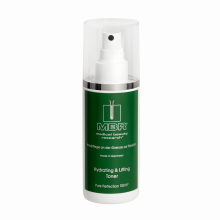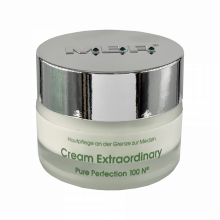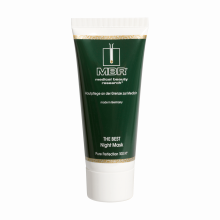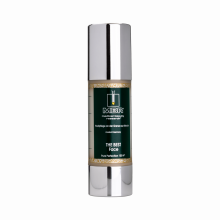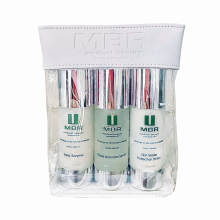Elastin and Youthful Skin
While collagen is a crucial factor in maintaining healthy, beautiful skin, there is another protein in our skin that is equally important for the health and appearance of our skin: elastin. Elastin is a protein found in the skin and connective tissue throughout our bodies. It keeps our skin flexible and tight, allowing the tissue to return to its original shape after stretching or contracting. Elastin also keeps skin smooth as it tries to accommodate our daily activities, such as muscle-flexing and talking.
What is Elastin?
Elastin comprises the protein fibrillin and 830 amino acids such as glycine, valine, alanine, and proline. It is made by linking soluble tropoelastin protein molecules and serves essential functions in our arteries, assisting blood flow, as well as our lungs, elastic ligaments, skin, bladder, elastic cartilage, intervertebral disc above the sacroiliac, and large elastic blood vessels such as the aorta.
As with collagen, elastin is produced by fibroblasts—connective tissue cells present in the dermis. These fibroblasts secrete soluble tropoelastin molecules, an immature form of elastin that is cross-linking in a reaction catalyzed by the enzyme lysyl oxidase. This reaction creates a durable, resilient network of elastin fibers that operates similarly to latex.
Products stimulating fibroblasts
The younger and healthier your skin is, the more elastin it contains, and the faster it goes back into place when contorted. This is because older skin takes several seconds to be restored to its natural condition, while young skin does so instantaneously. You can test the elastin level in your skin by pinching the back of your hand and watching how quickly it snaps back into position when you release it.
Elastin levels in our skin peak during our adolescent years and decline once we get our twenties. The fibroblasts present in older skin are significantly less capable of developing new elastin, most likely due to changes in the skin’s biochemical development. Elastin production appears to stop over time, without any loss of fibroblasts or alterations in elastin-encoding genes. Theoretically, elastin production should thus be able to be stimulated by providing the appropriate biochemical signals to
The elastin levels in the skin usually reach a high in the adolescent years and decline as the individual reaches their 20s. Older skin's fibroblasts have a considerably reduced capacity to develop new elastin. This lack does not seem to be a consequence of the loss of fibroblasts or alterations in elastin-encoding genes. It is more likely that aging affects the skin's biochemical development and that elastin production stops over time. In theory, elastin should be able to be produced at youthful levels if given the appropriate biochemical signals.
How Can I Raise the Elastin Levels in my Skin?
With a disproportionate emphasis being placed on collagen in dermatological research and the cosmetic care industry, elastin is a commonly overlooked area of skincare. The intense focus on collagen has led to research into elastins being neglected over time. Numerous collagen enhancing products and procedures exist, such as topical compounds like ascorbic acid and copper peptides and treatments such as laser procedures, peels, and resurfacing. Unfortunately, the same cannot be said for products and procedures to boost the skin’s elastin levels, despite its comparable importance in the rejuvenation process and overall health and appearance of our skin.
Products with Copper required for the Lysyl oxidase enzyme
However, a few methods have had some level of success in maintaining or restoring elastin levels in aging skin. Though unproven, the following substances and means are thought to achieve this task to some extent.
Retinoic acid
Retinoic acid, also known as tretinoin, Retin A, or Renova, has been proven to increase the growth of elastin up to 2.8% in the embryonic vascular smooth muscle cells of chicks. Retinol, a form of vitamin A, often considered to be an alternative to retinoic acid in the skincare industry, had no effect on elastin production in the study, however. While topical retinoids may raise elastin synthesis on human skin, there hasn’t been any conclusive study done on the subject. (See also: articles on tretinoin and other retinoids)
MMP inhibitors
Skin rejuvenation is about more than just stimulating the production of the critical components that make up our skin. It’s important to also protect our skin from excessive breakdown caused by matrix metalloproteinase (MMP) enzymes, which come in various forms. These enzymes are responsible for breaking down elastins in our skin, and slowing them down may increase overall elastin content.
Products containing Ergothioneine that inhibits MMP
Controlled Tissue Injury Procedures
Laser treatments and peels are just two of many procedures done to rejuvenate the skin. This is done through controlled tissue injury, followed by remodeling the skin to produce a new skin matrix and often makes skin look younger and healthier. While the main protein produced during the healing process is collagen, elastin levels are also raised, at least in the interim. However, it’s currently unknown whether such procedures can lead to the continuing improvement of the thickness and quality of elastin or whether the effects are merely temporary. (See our section on noninvasive treatments).
Topical tropoelastin
Fibroblasts synthesize the immature, insoluble form of elastin (tropoelastins), attaching themselves as an elastic web to the dermis. A product has been created to topically apply tropoelastin to the skin in a cream that allegedly boosts elastin levels, reduces wrinkles, and tones the skin. The effectiveness of this product is unknown, and none of their relevant research has been published in research journals. It is unusual for proteins with a large molecule makeup, such as tropoelastin, to penetrate the skin to the extent of having a measurable result. While minor skin penetration to the dermis layer is occasionally possible, this occurring to the drastically rejuvenating extent boosted by the producer of this product is unlikely. More solid, published scientific evidence is needed on this subject.
Ethocyn
Ethylhexyl-bicyclooctane, commonly known as ethocyn, is a small molecule and can thus easily be absorbed down as far as the dermis. However, while his molecule is believed to raise elastin production levels to young adult years, concrete scientific evidence is lacking again.

